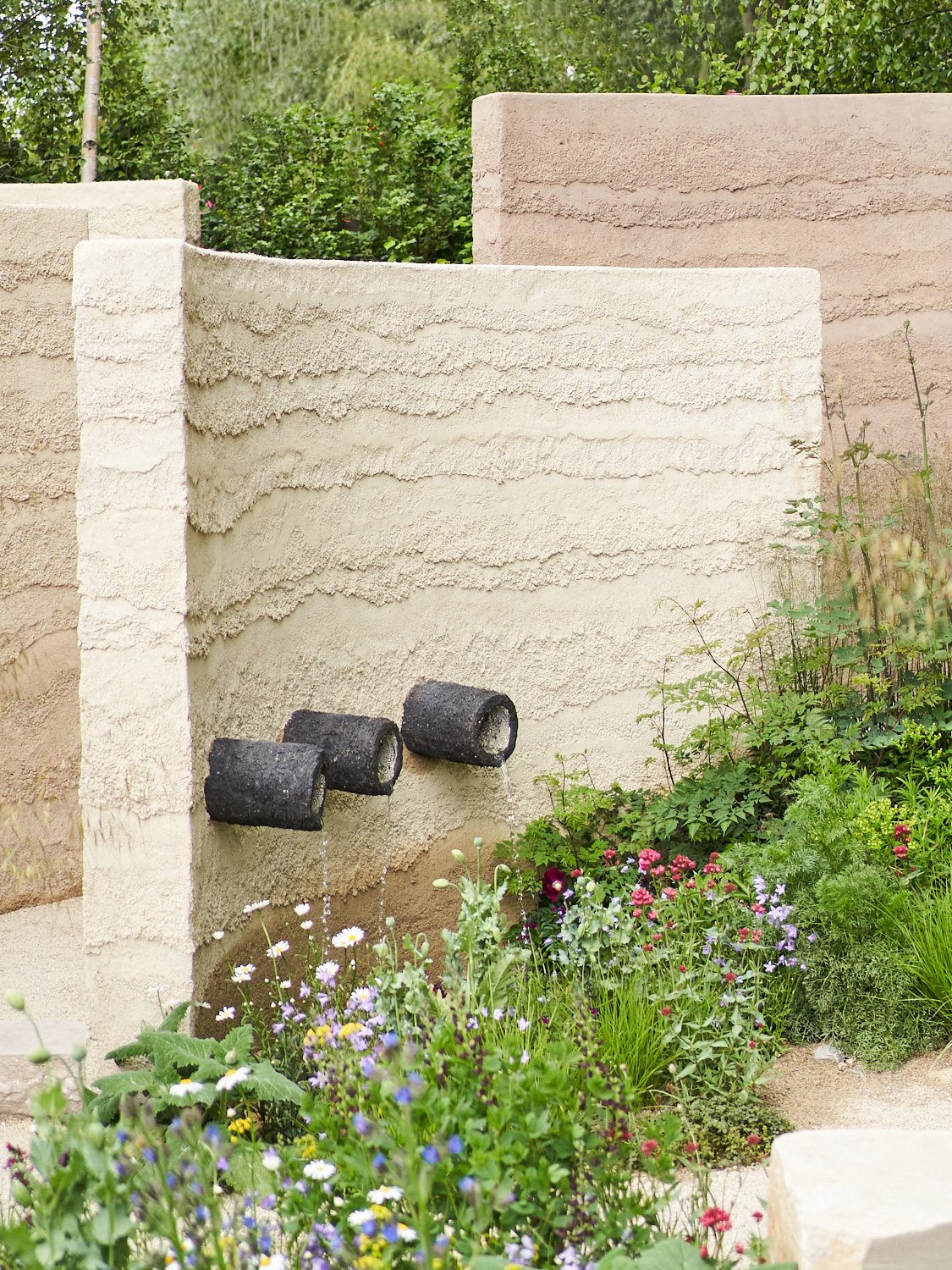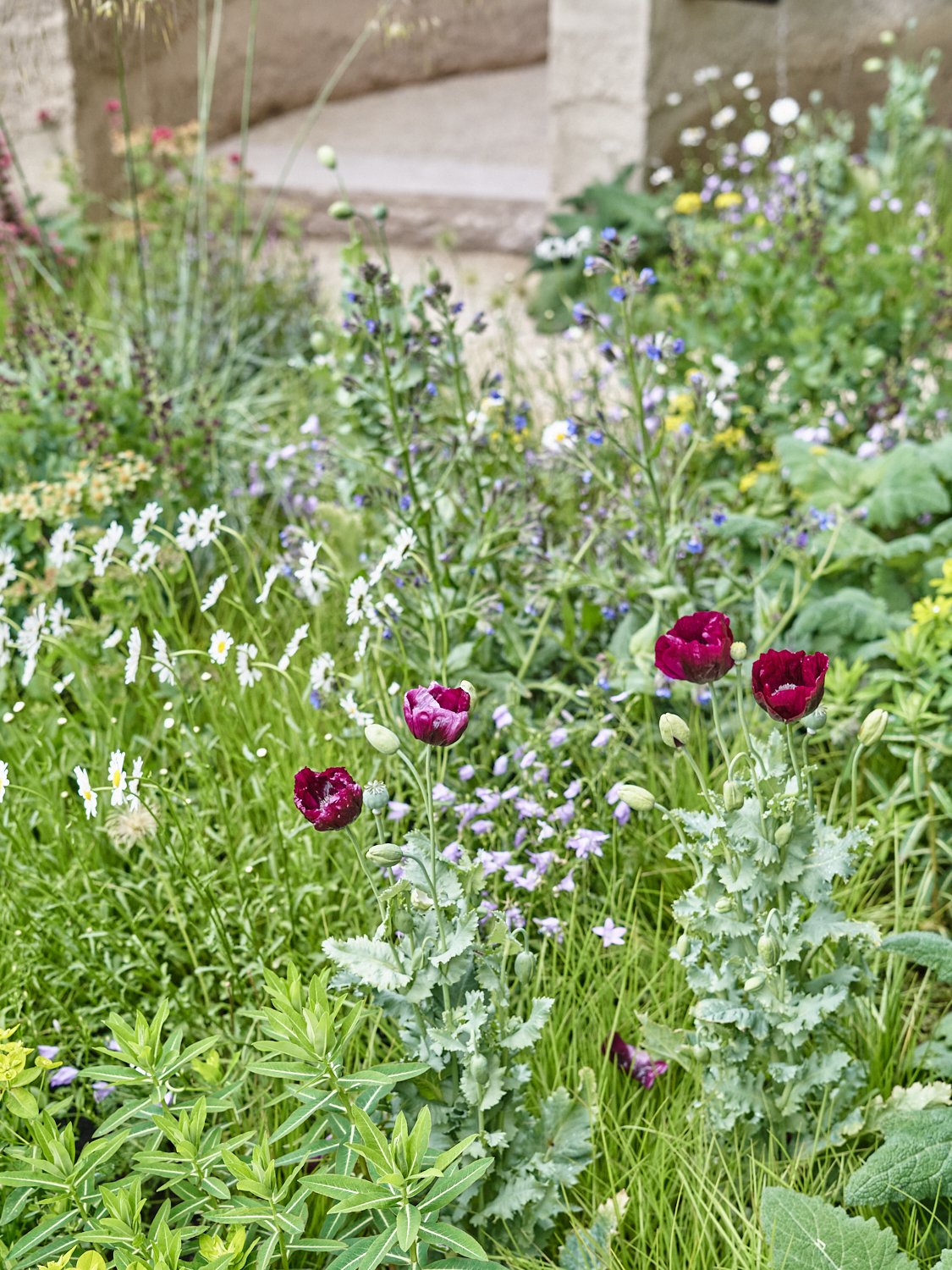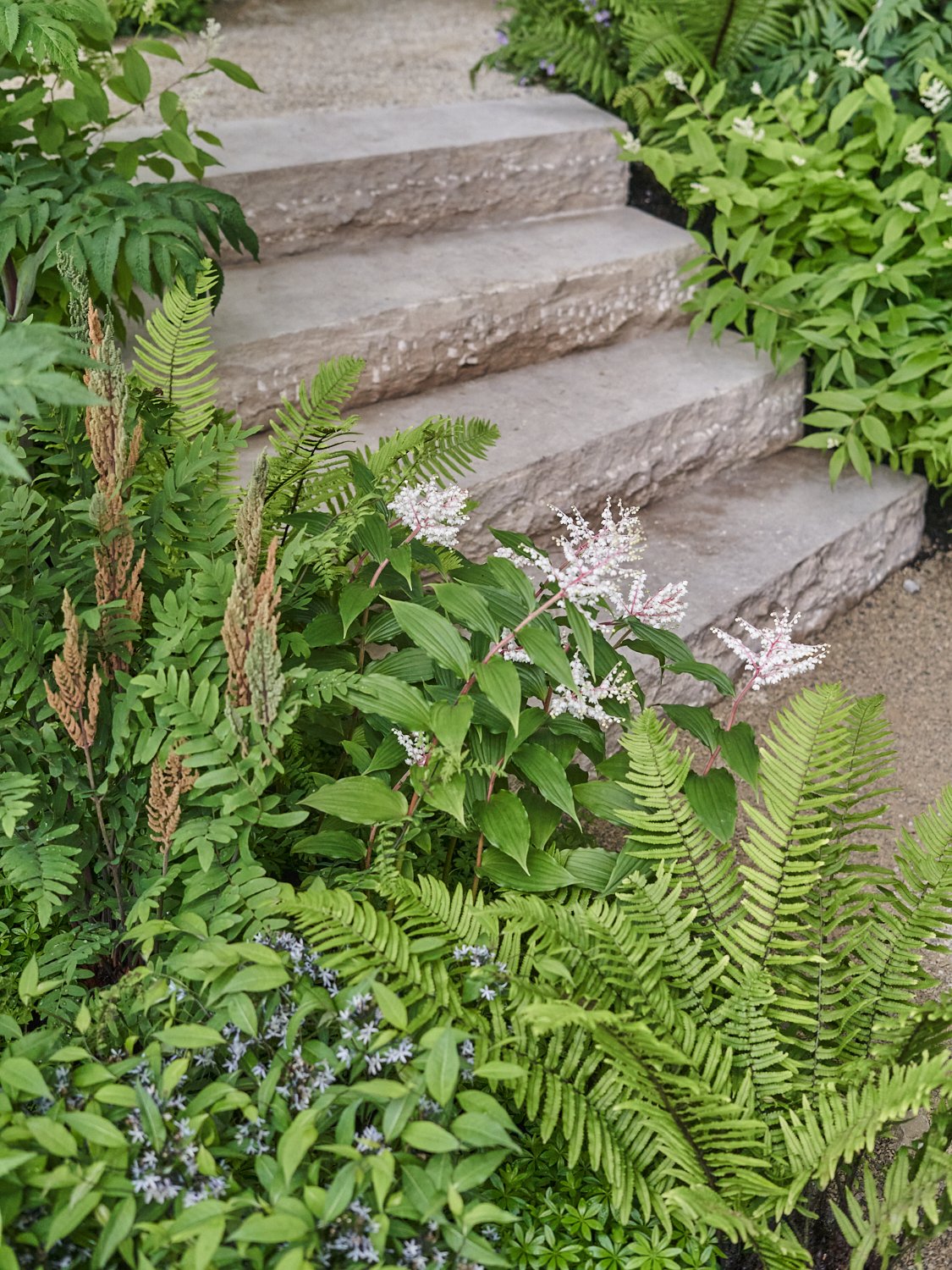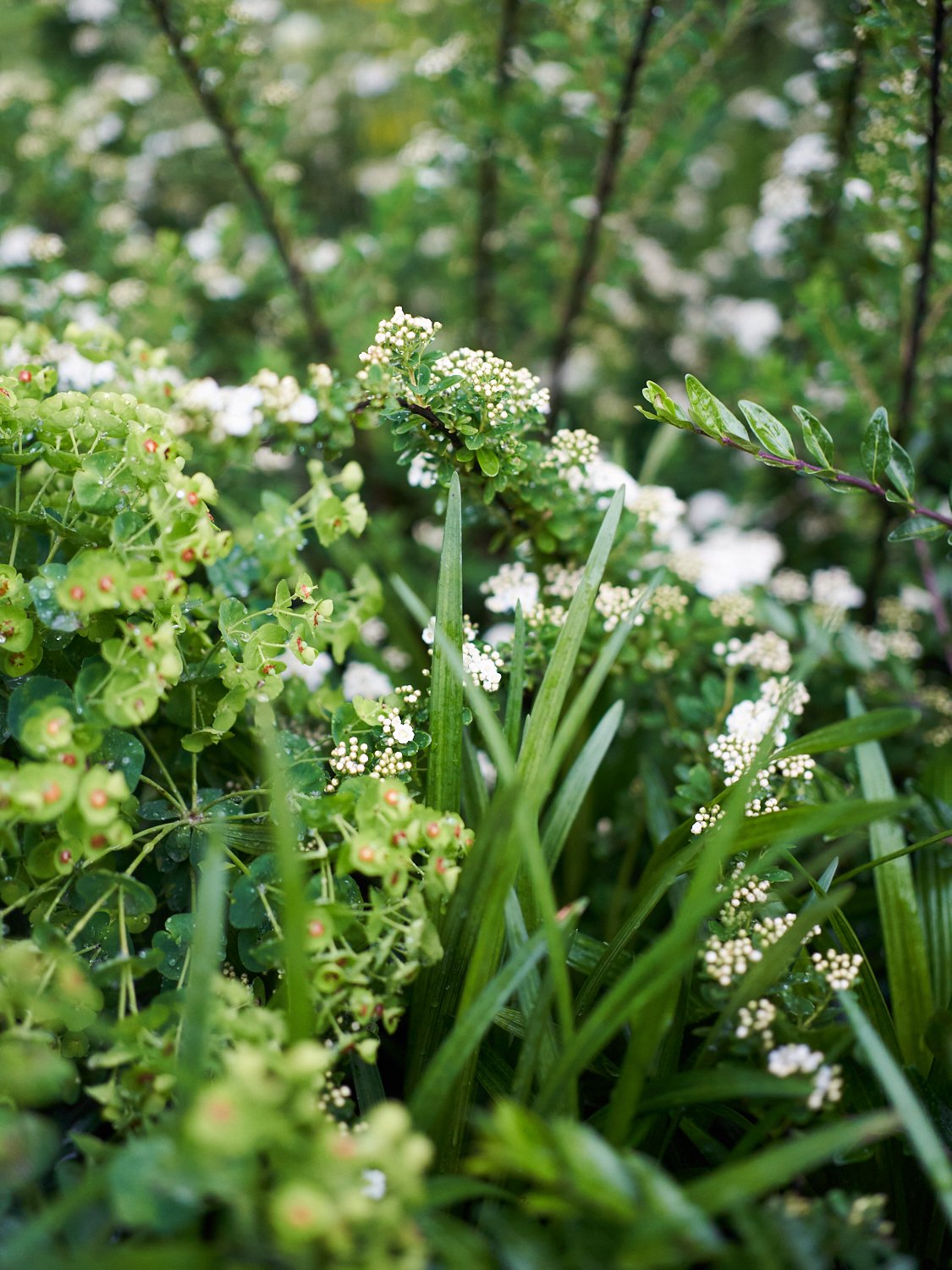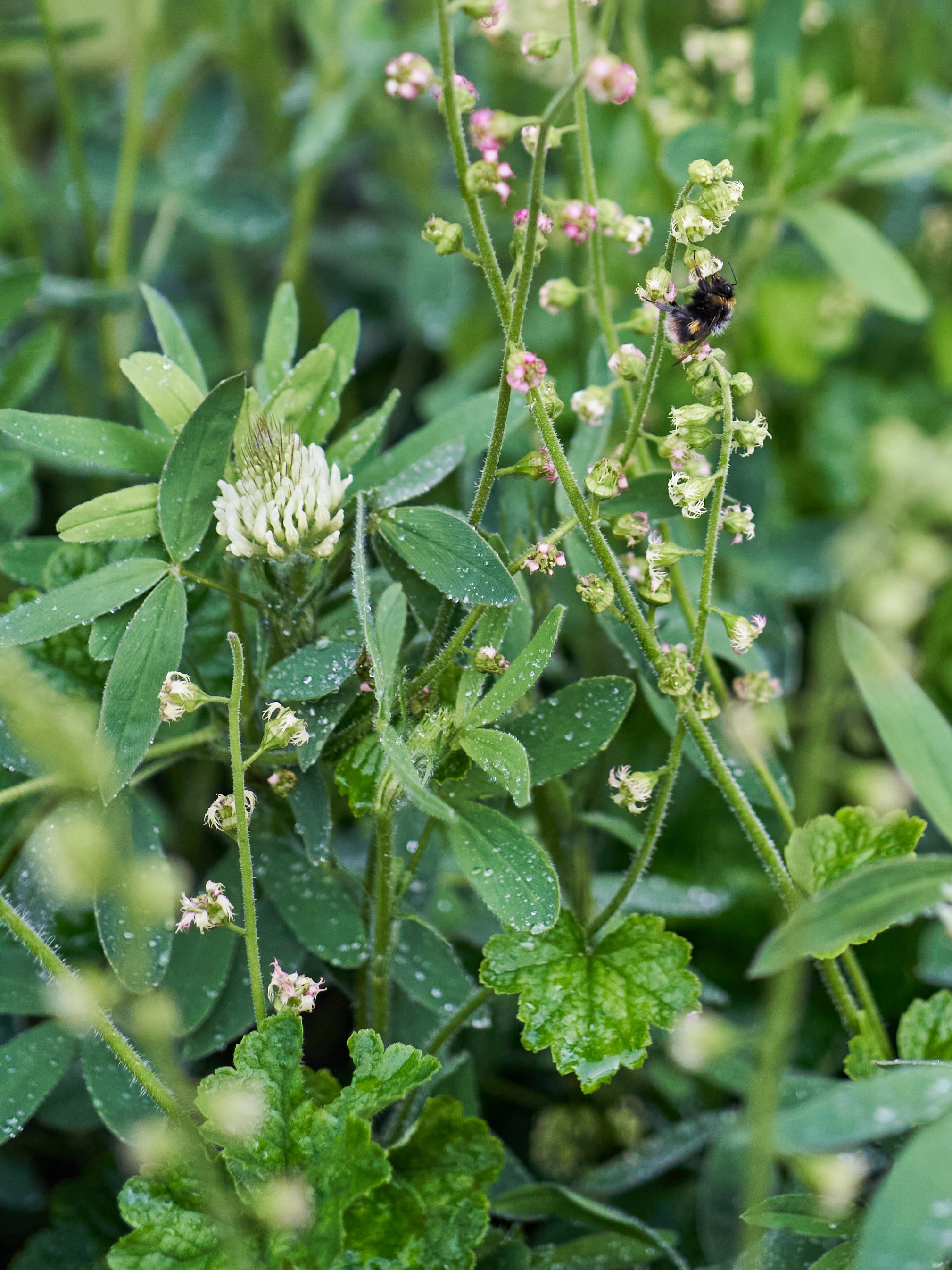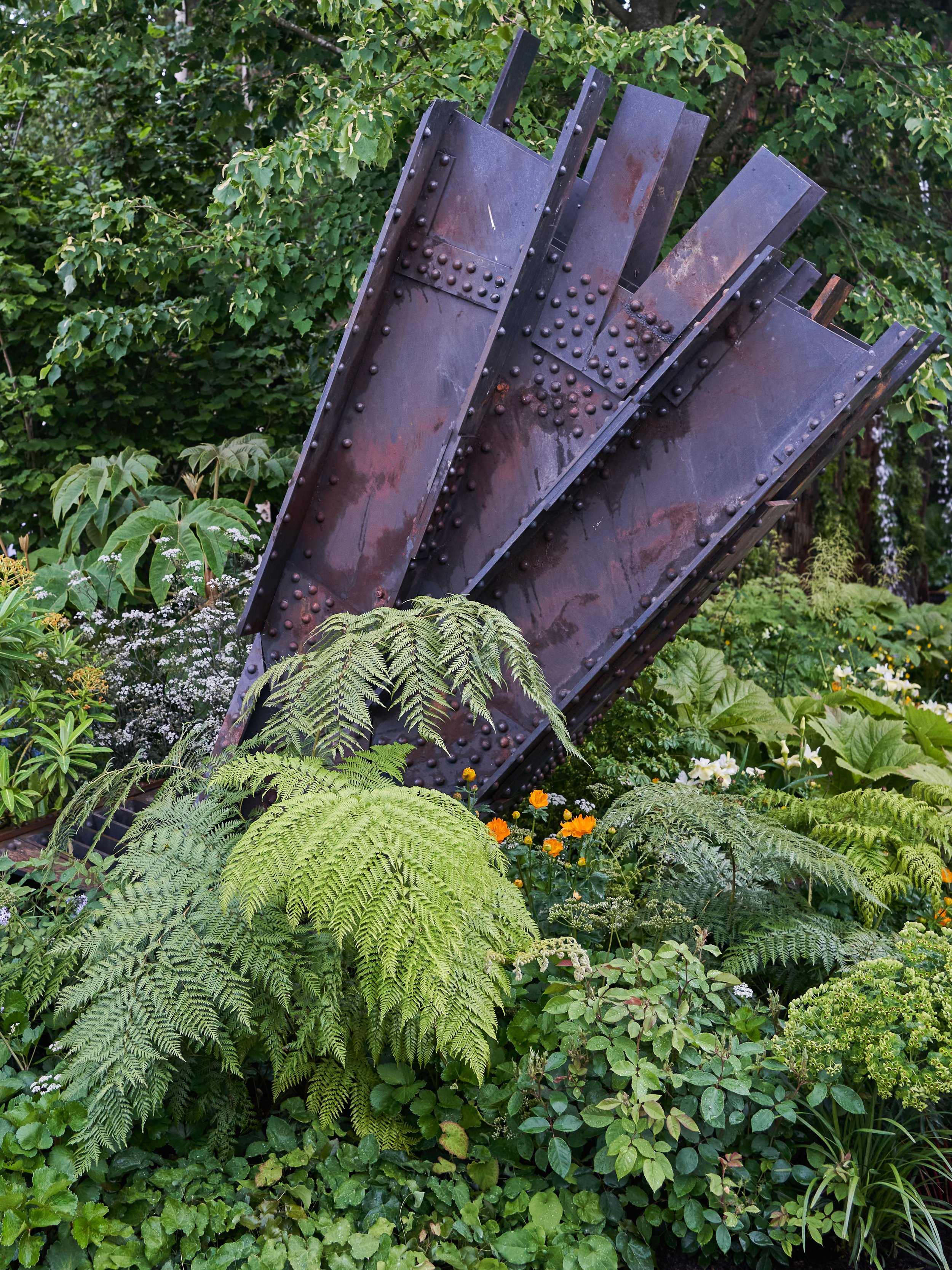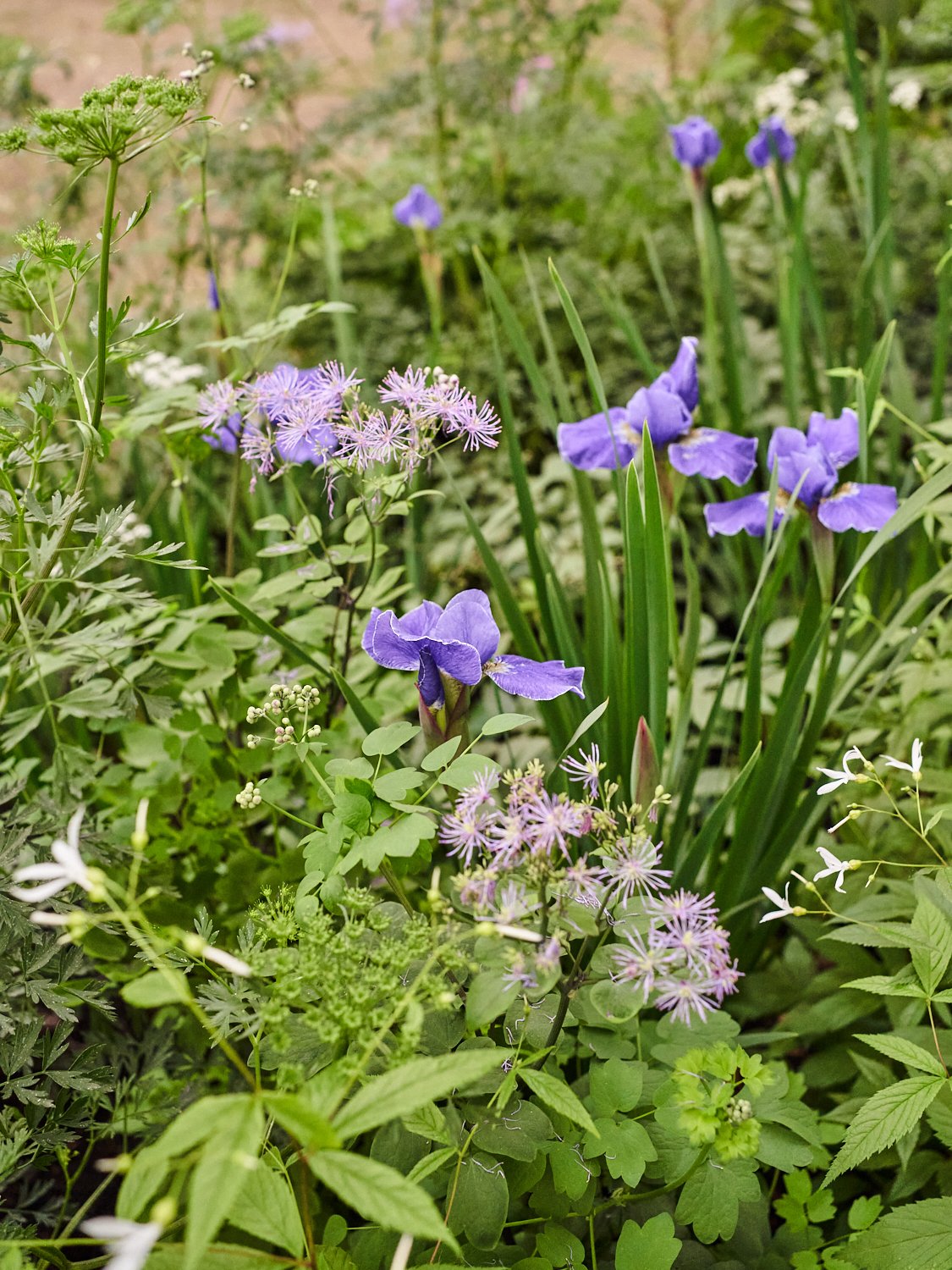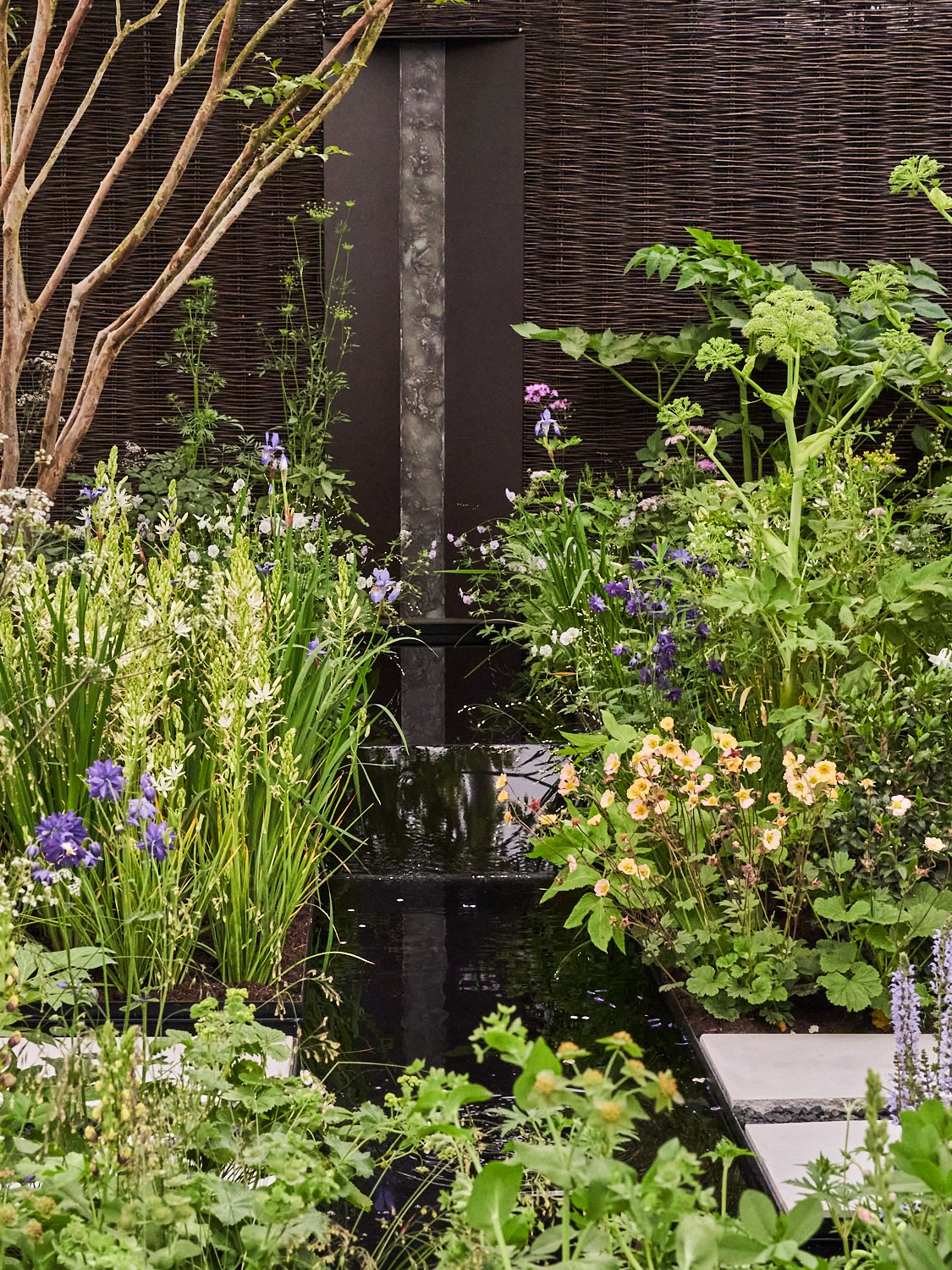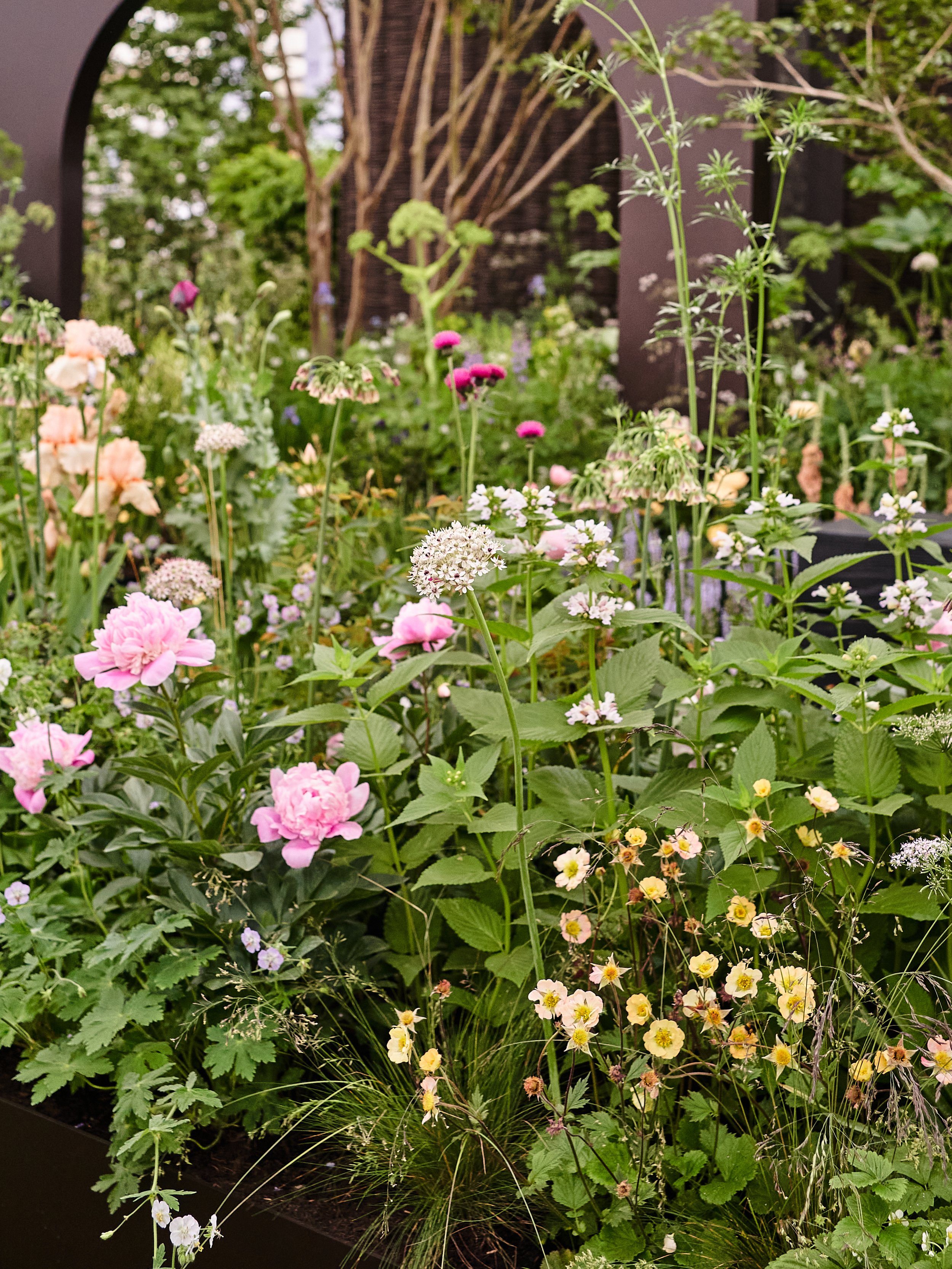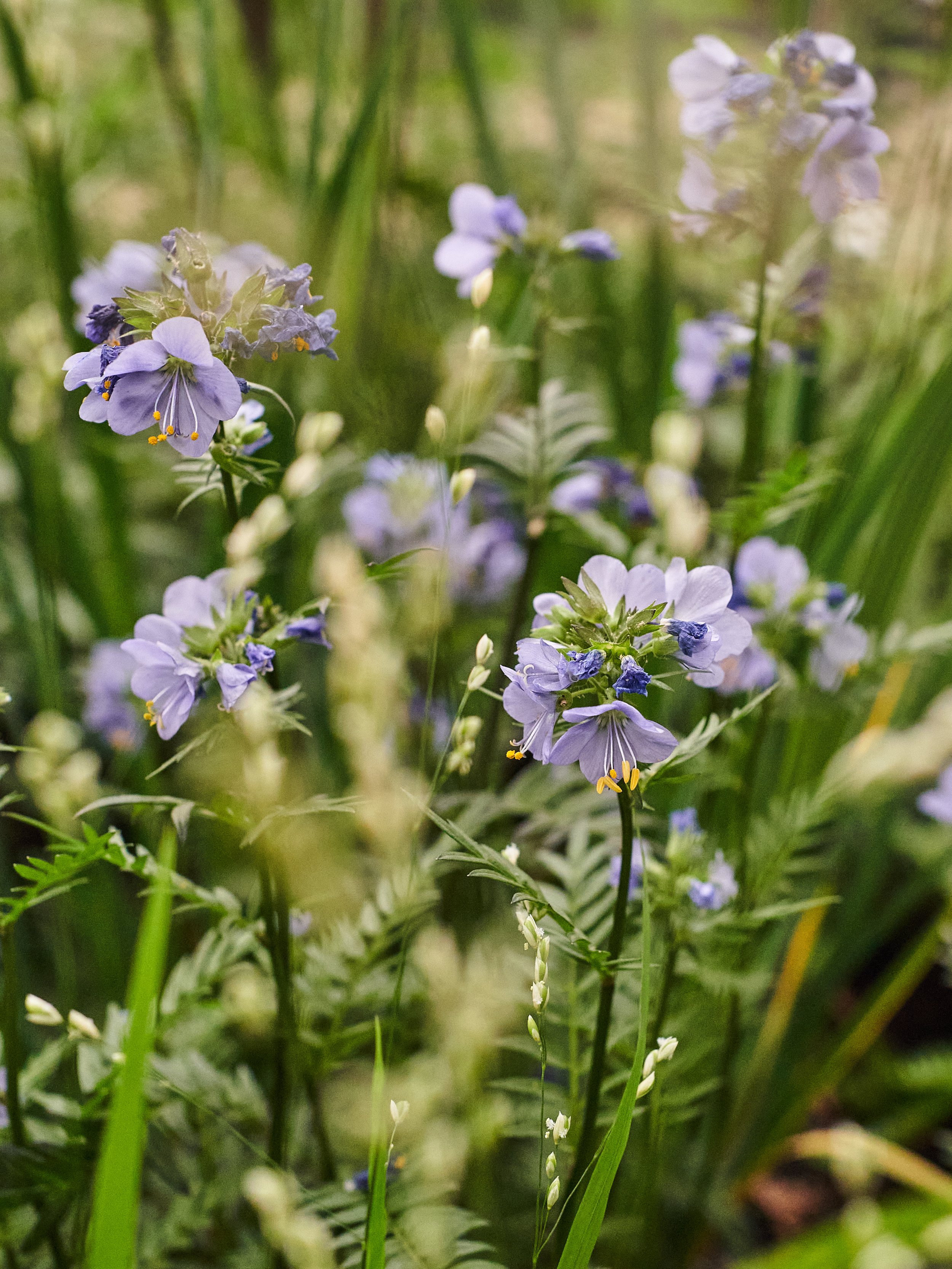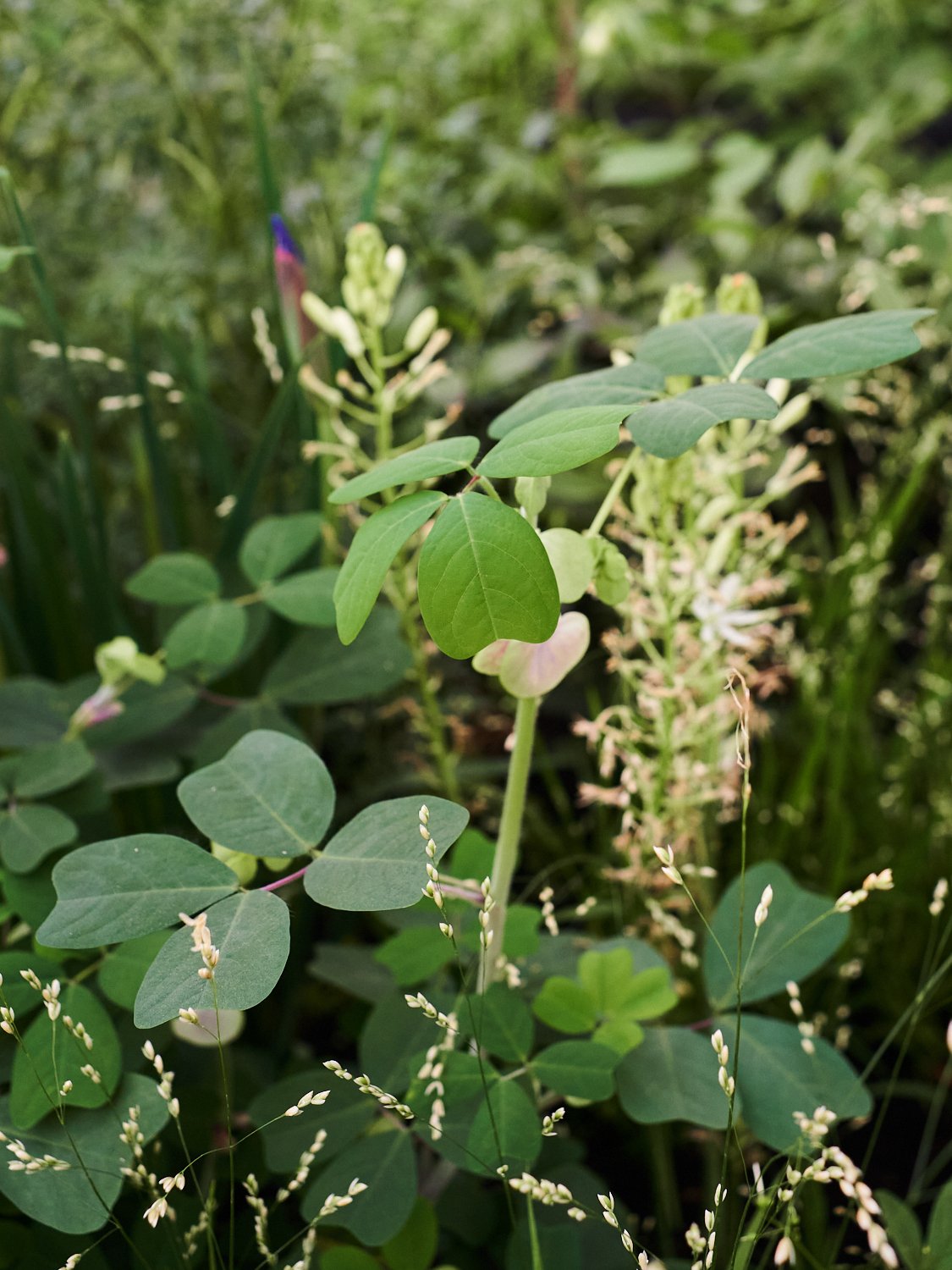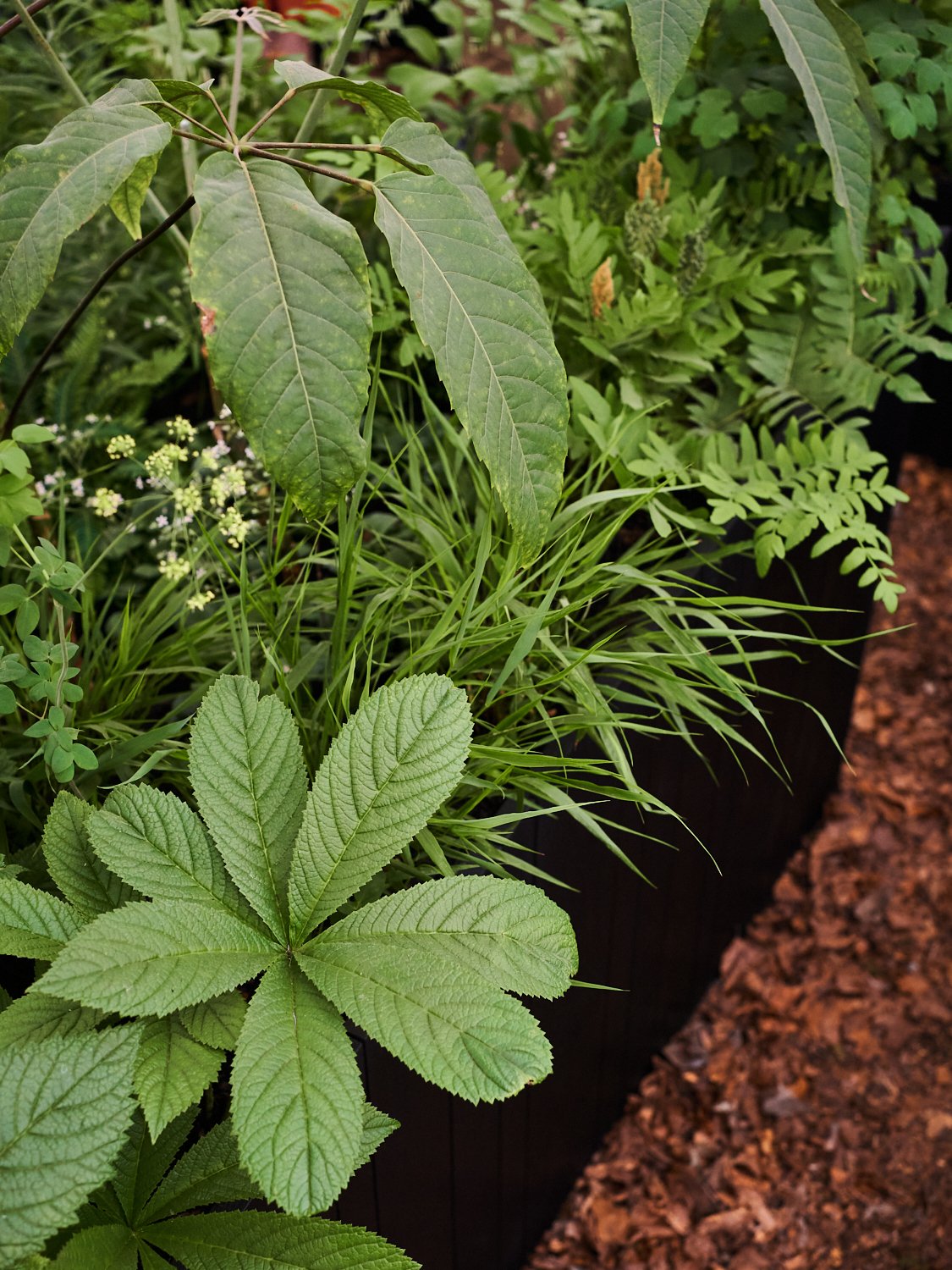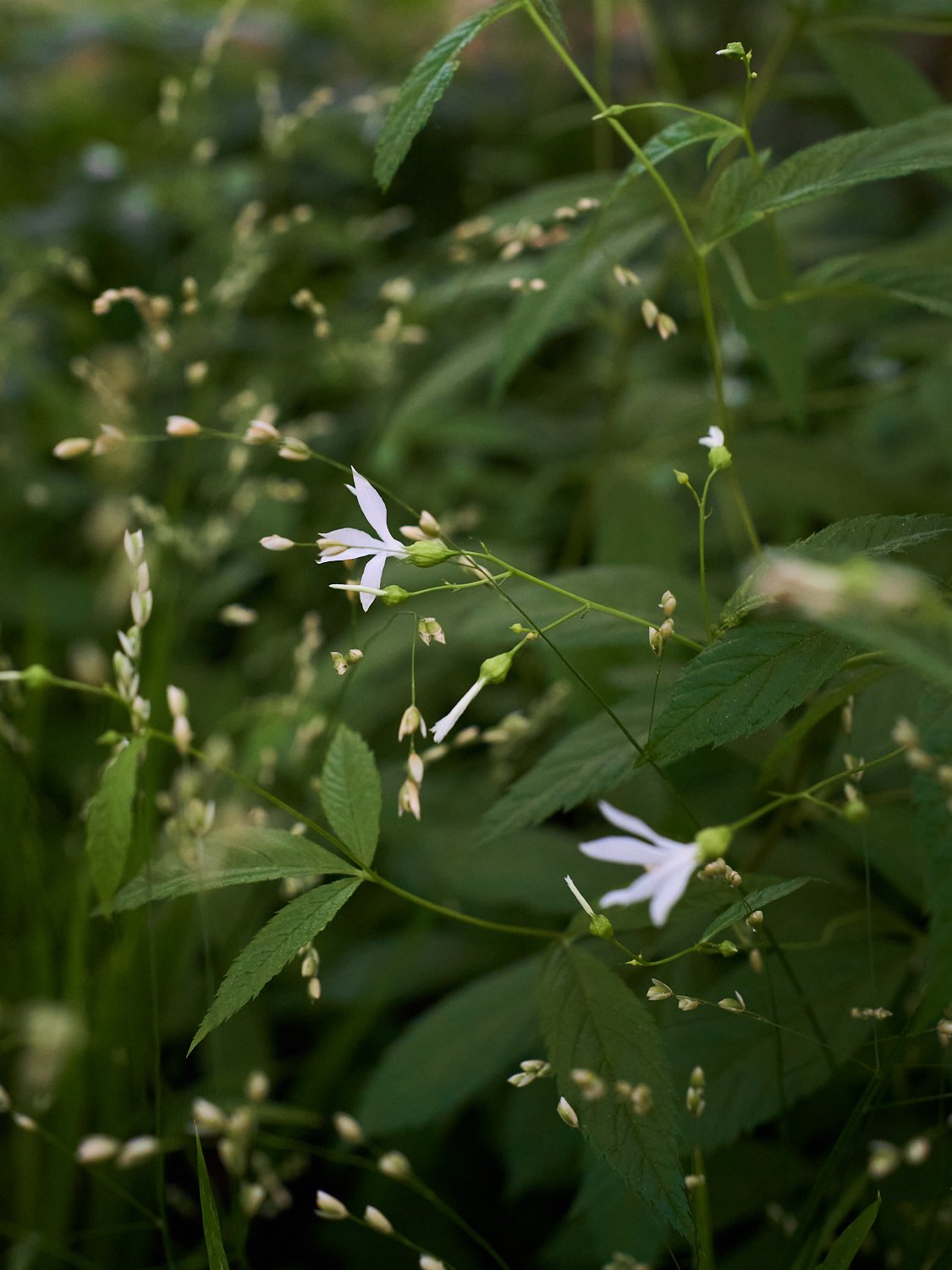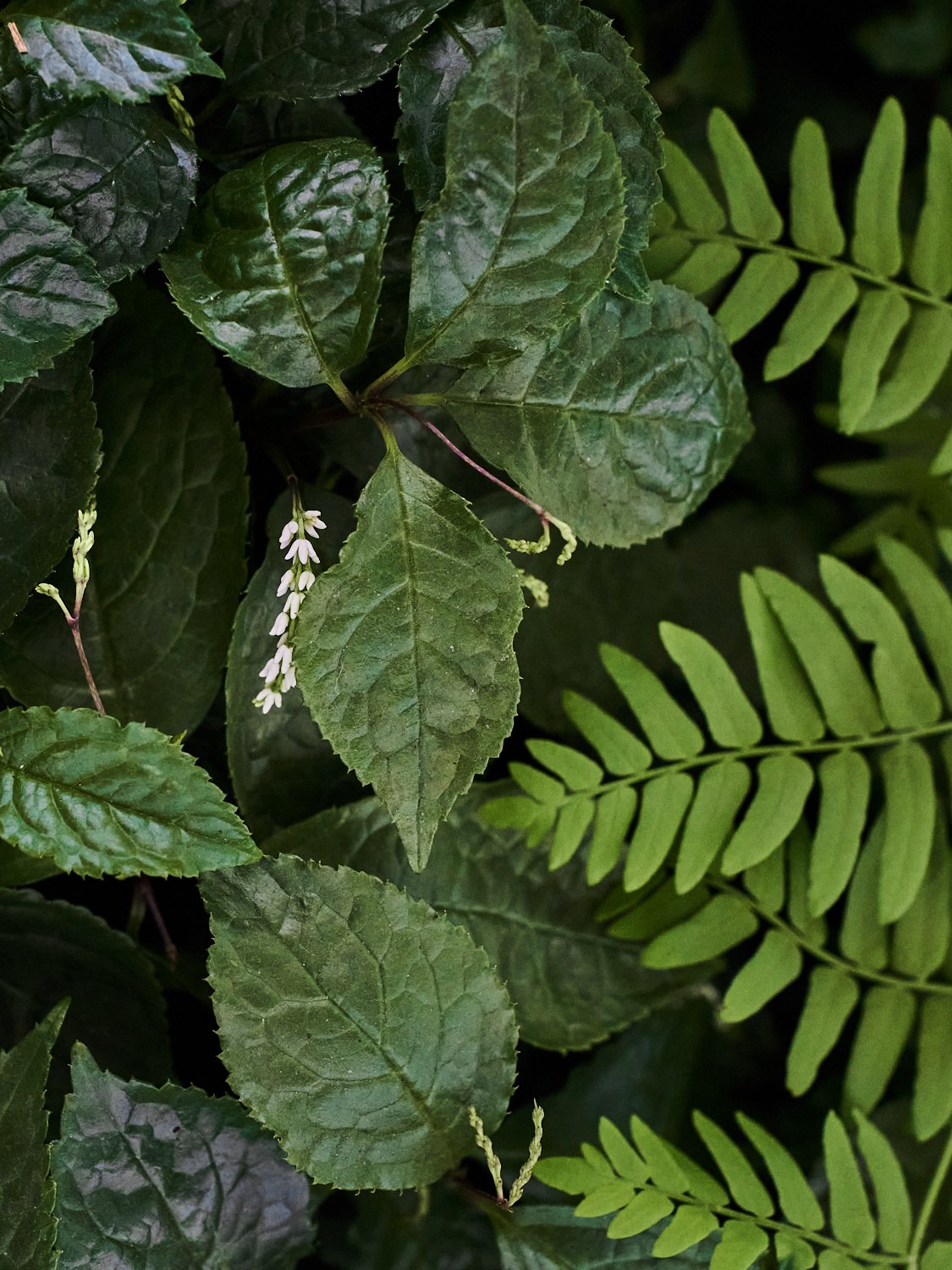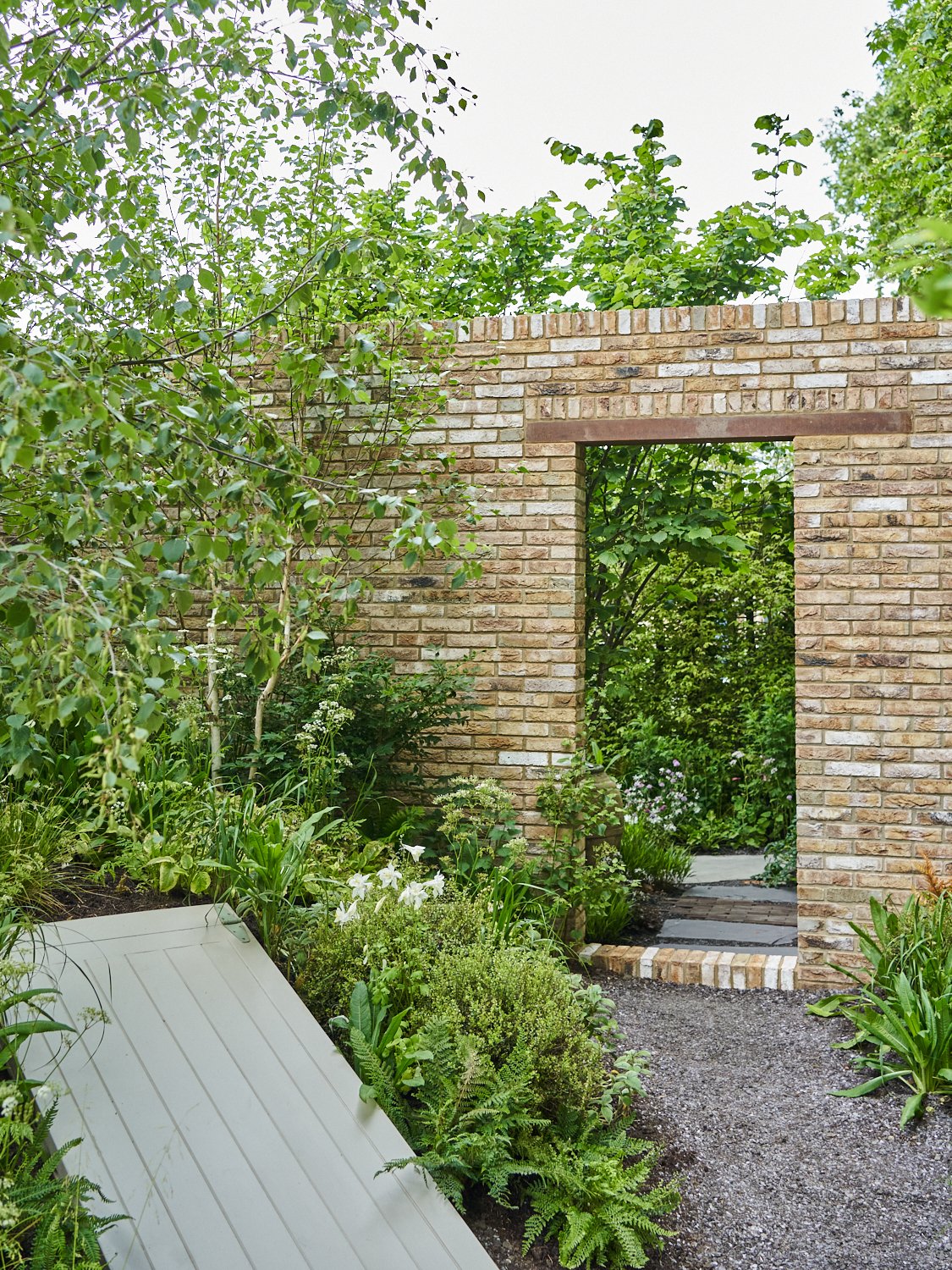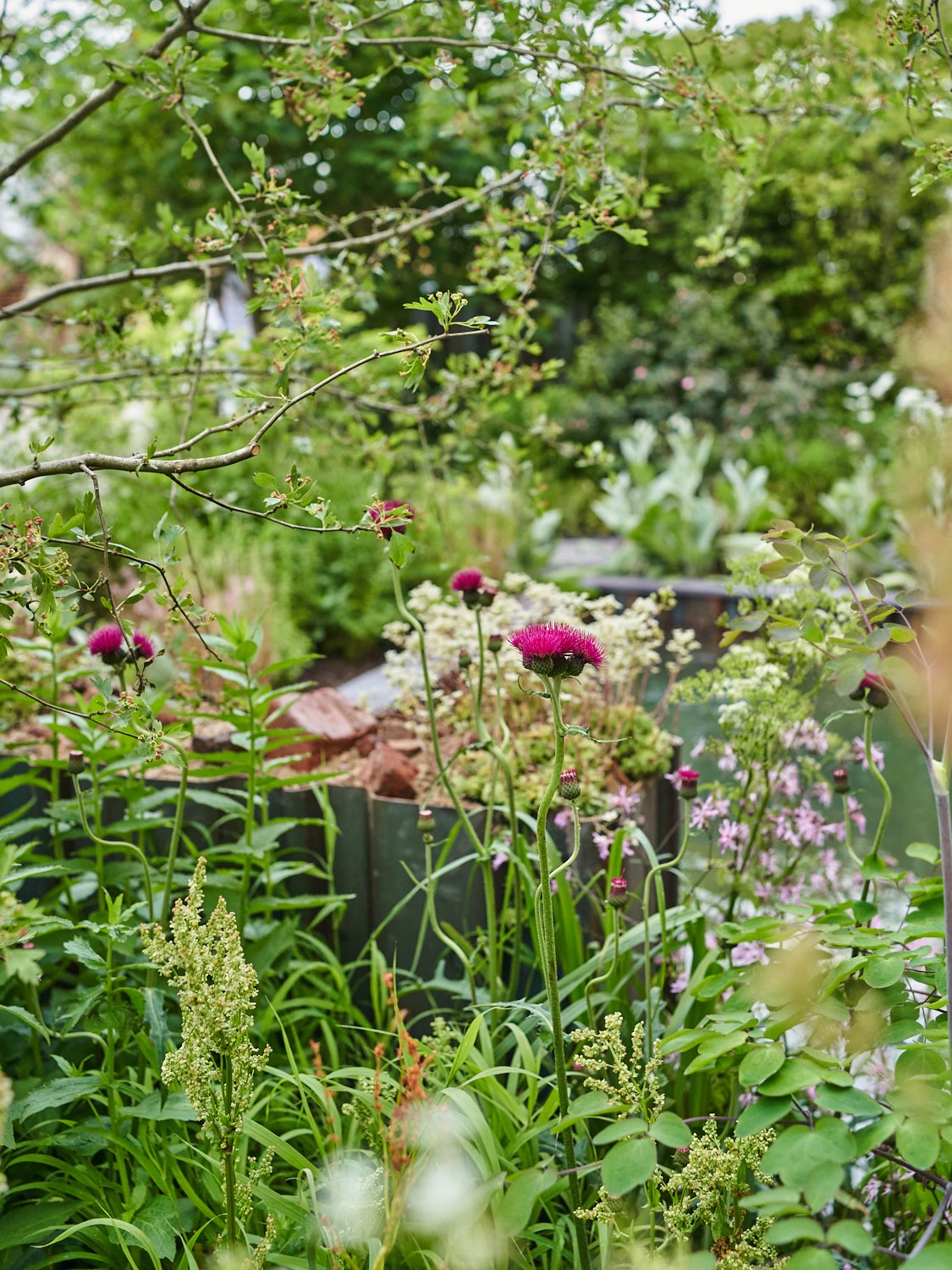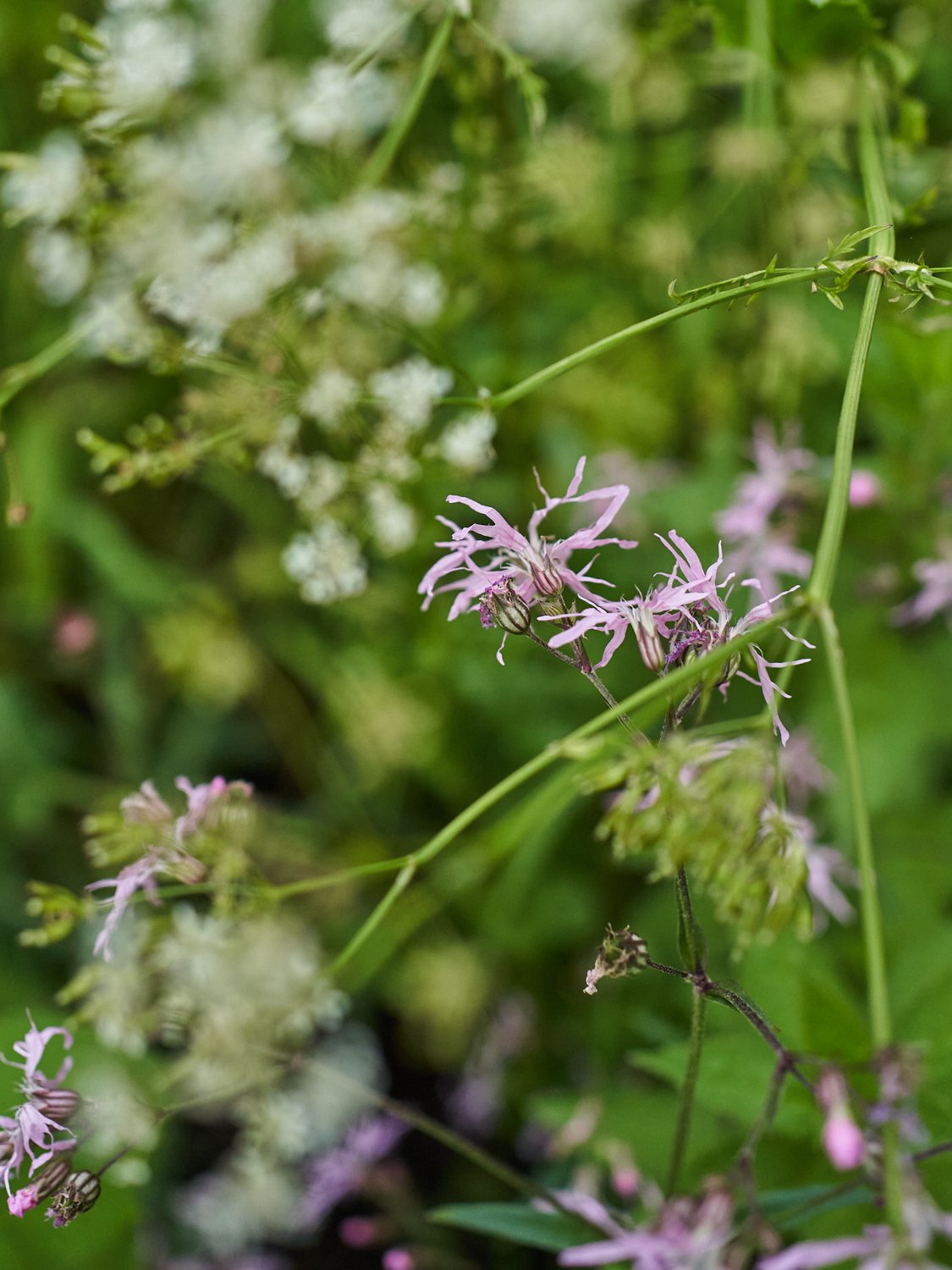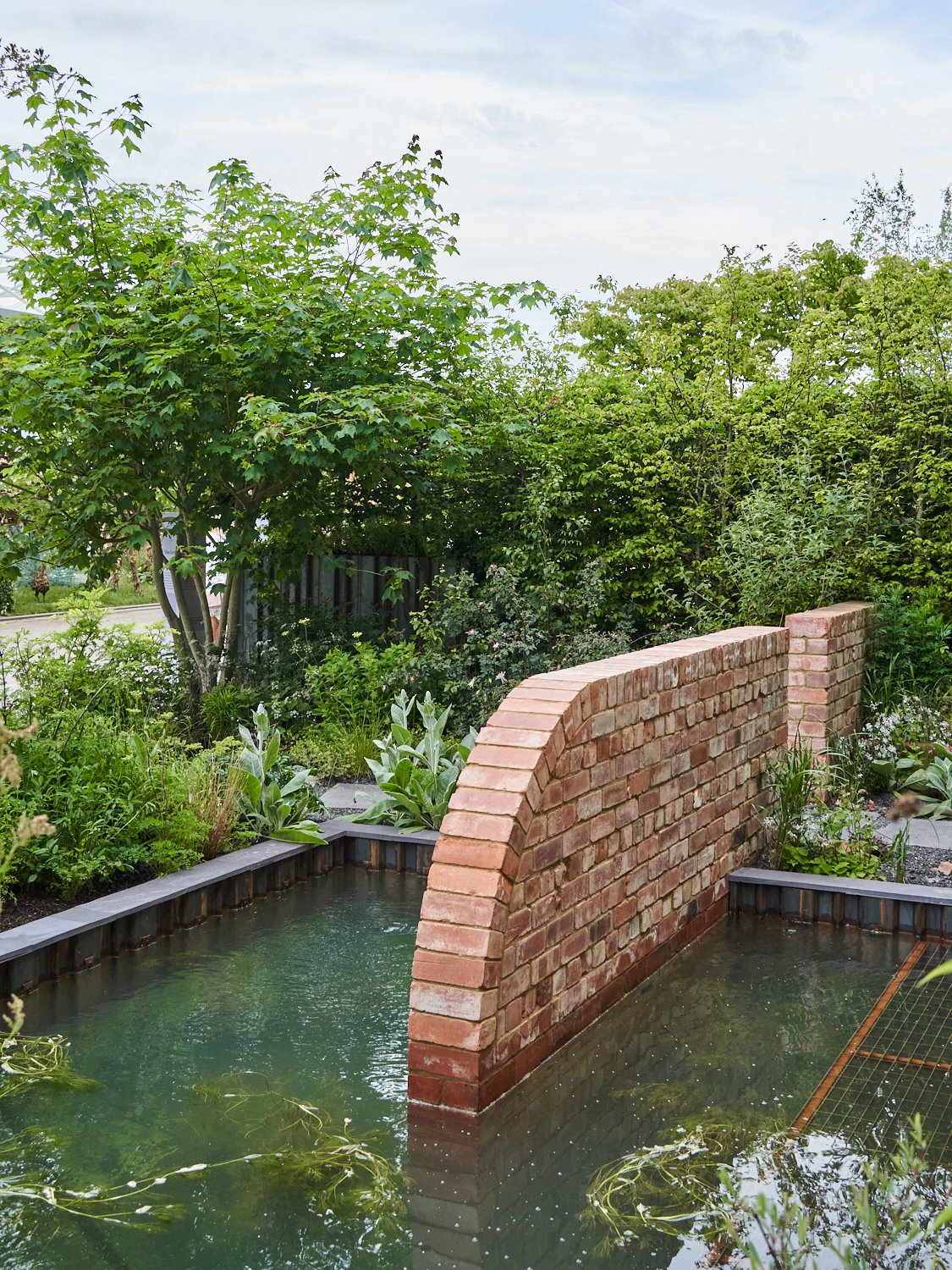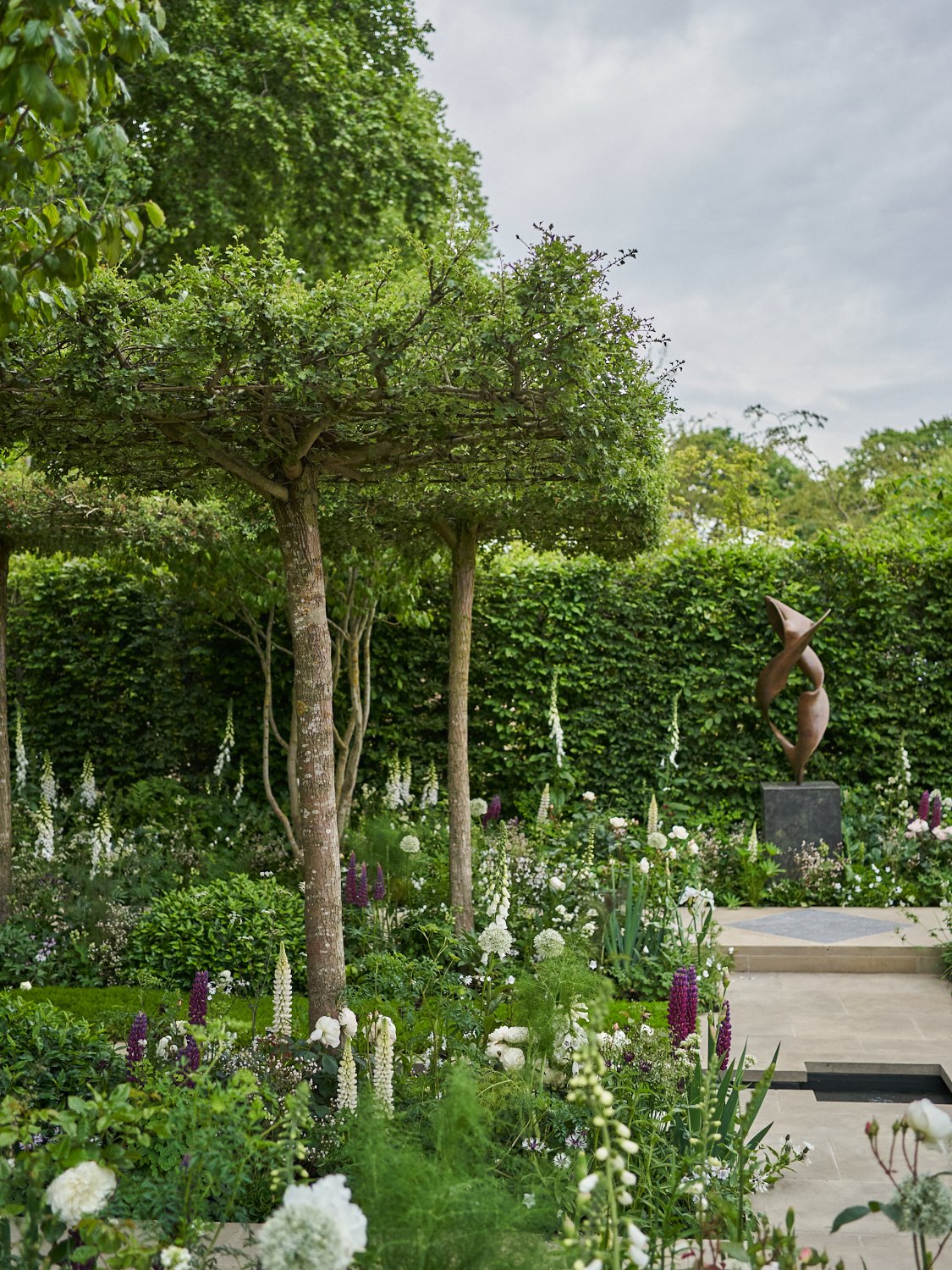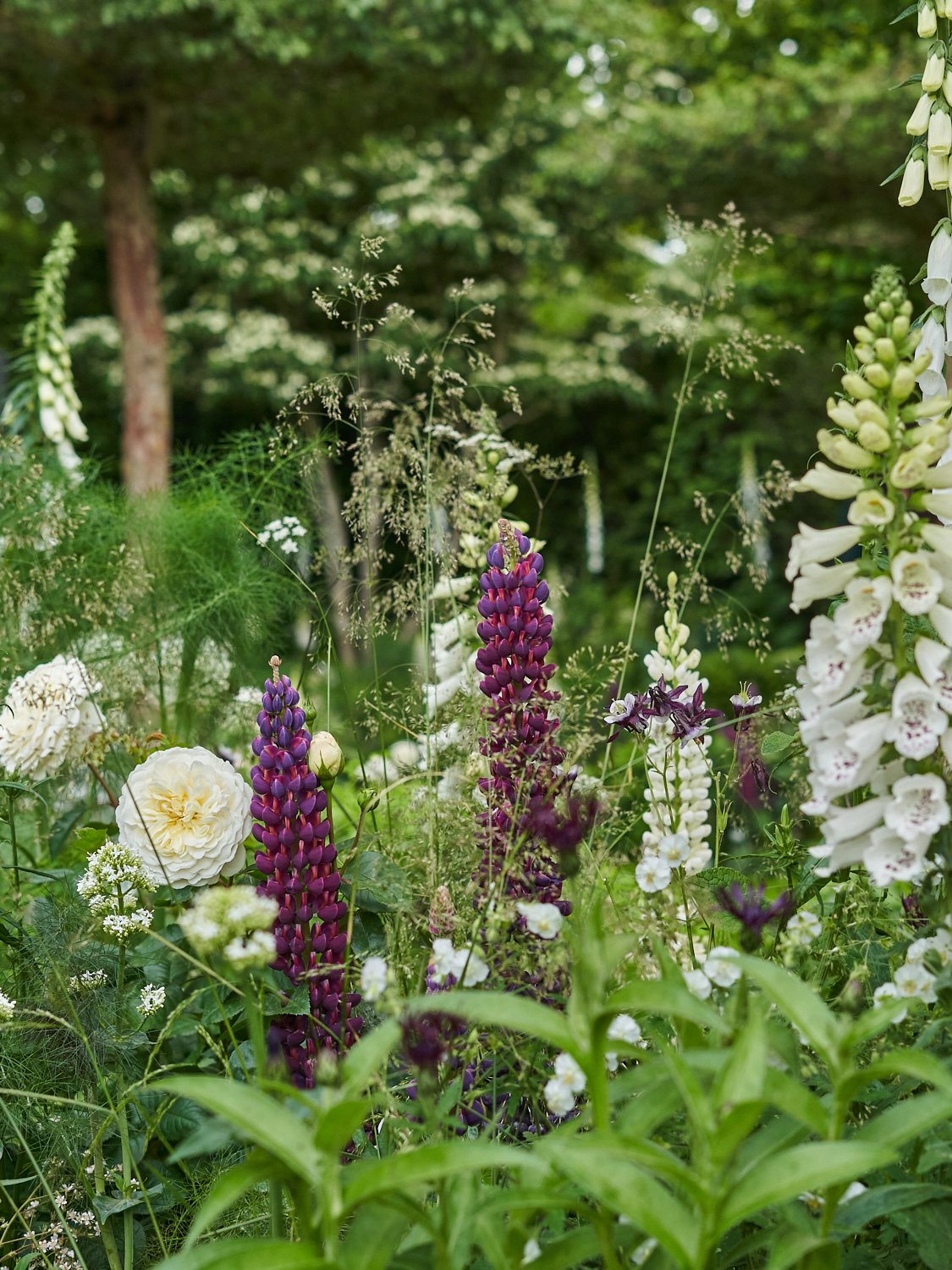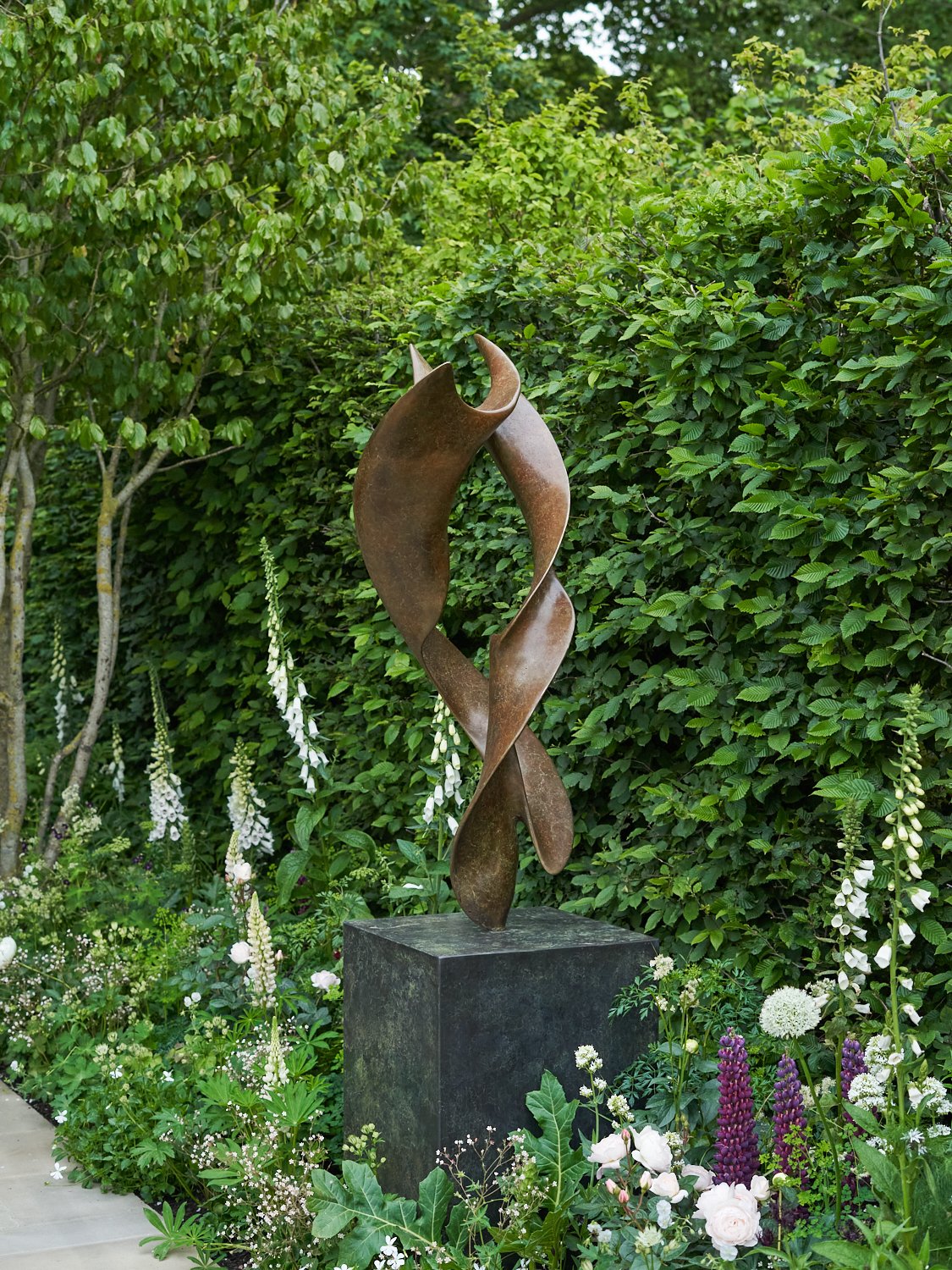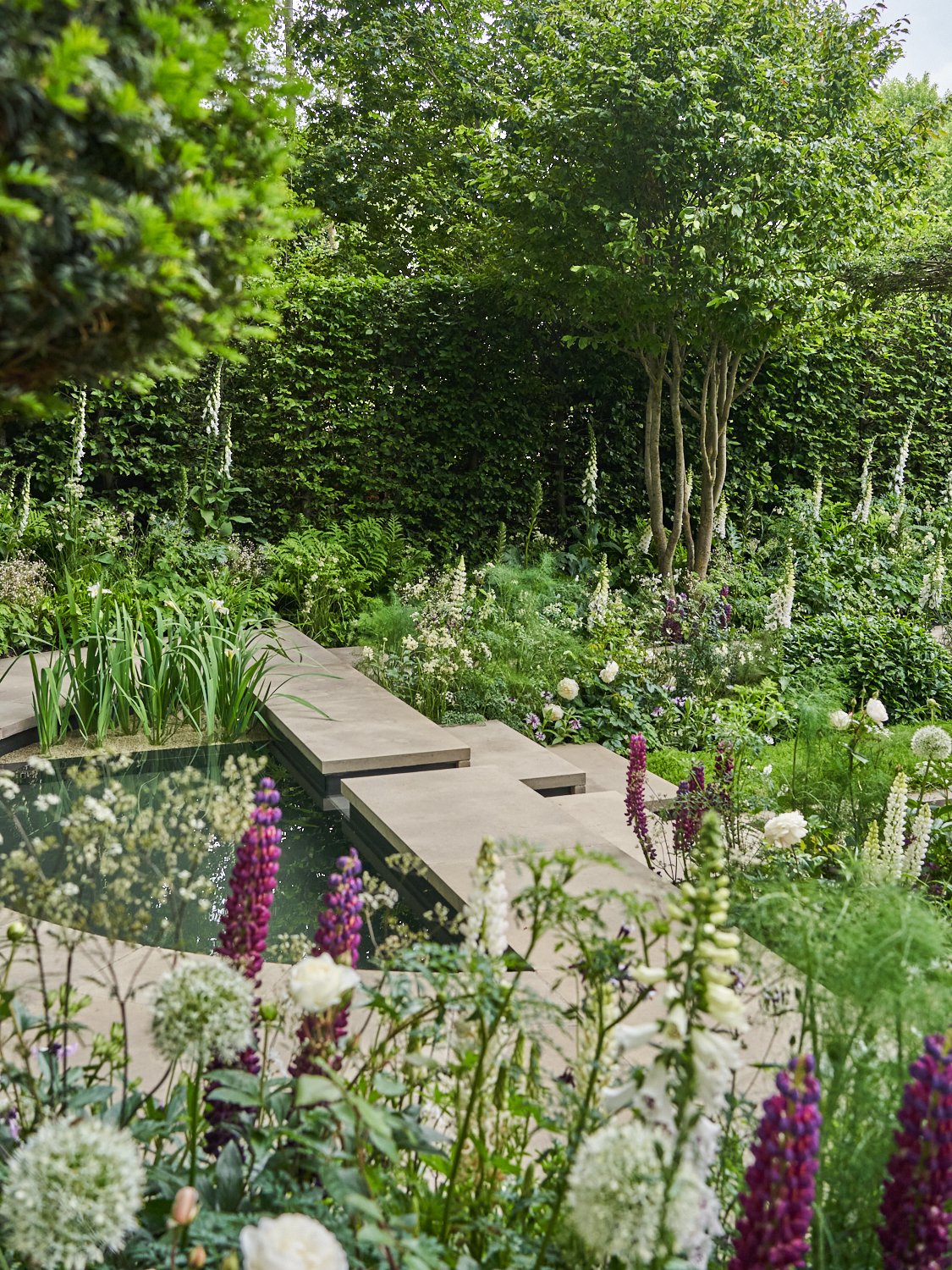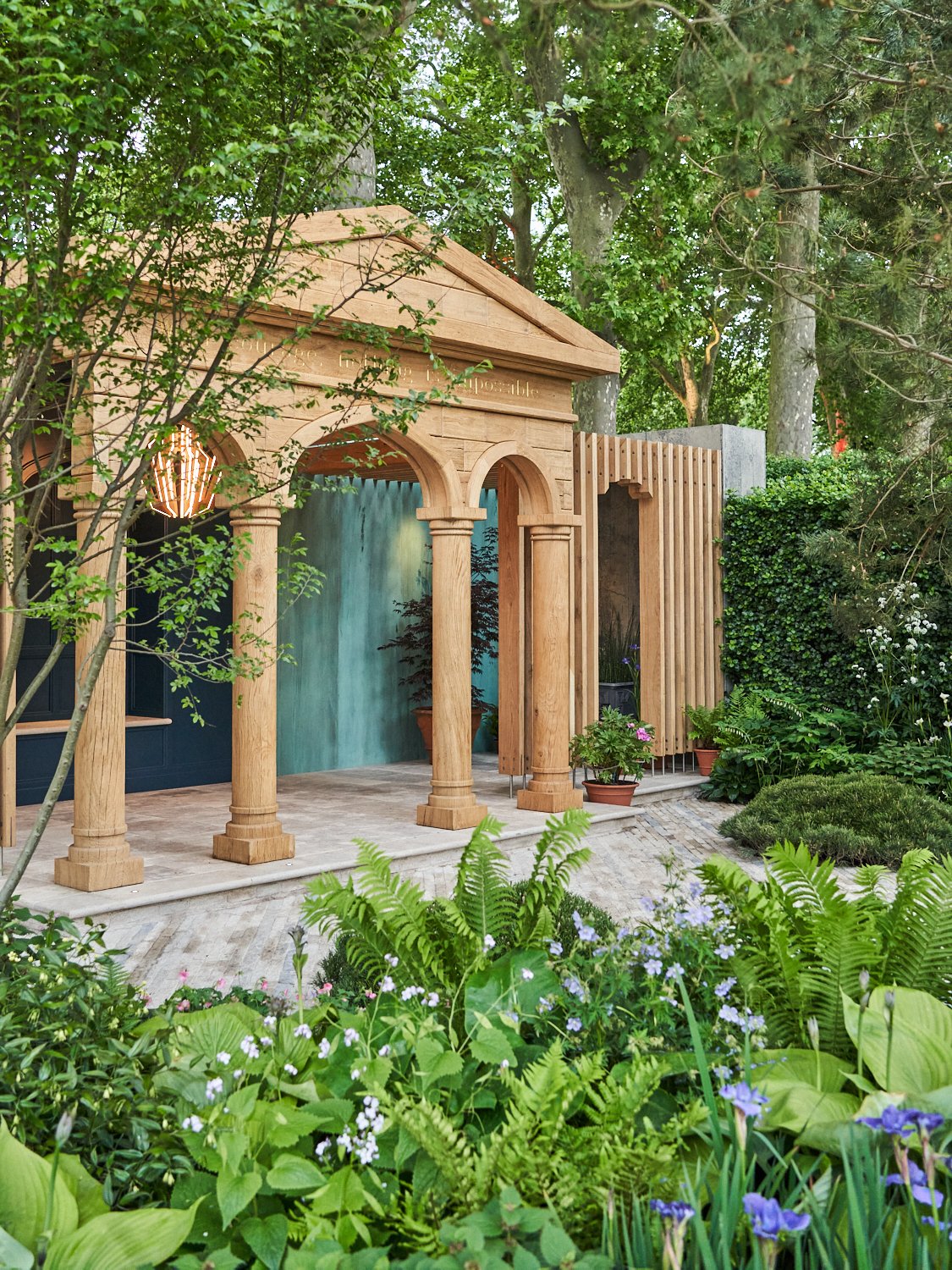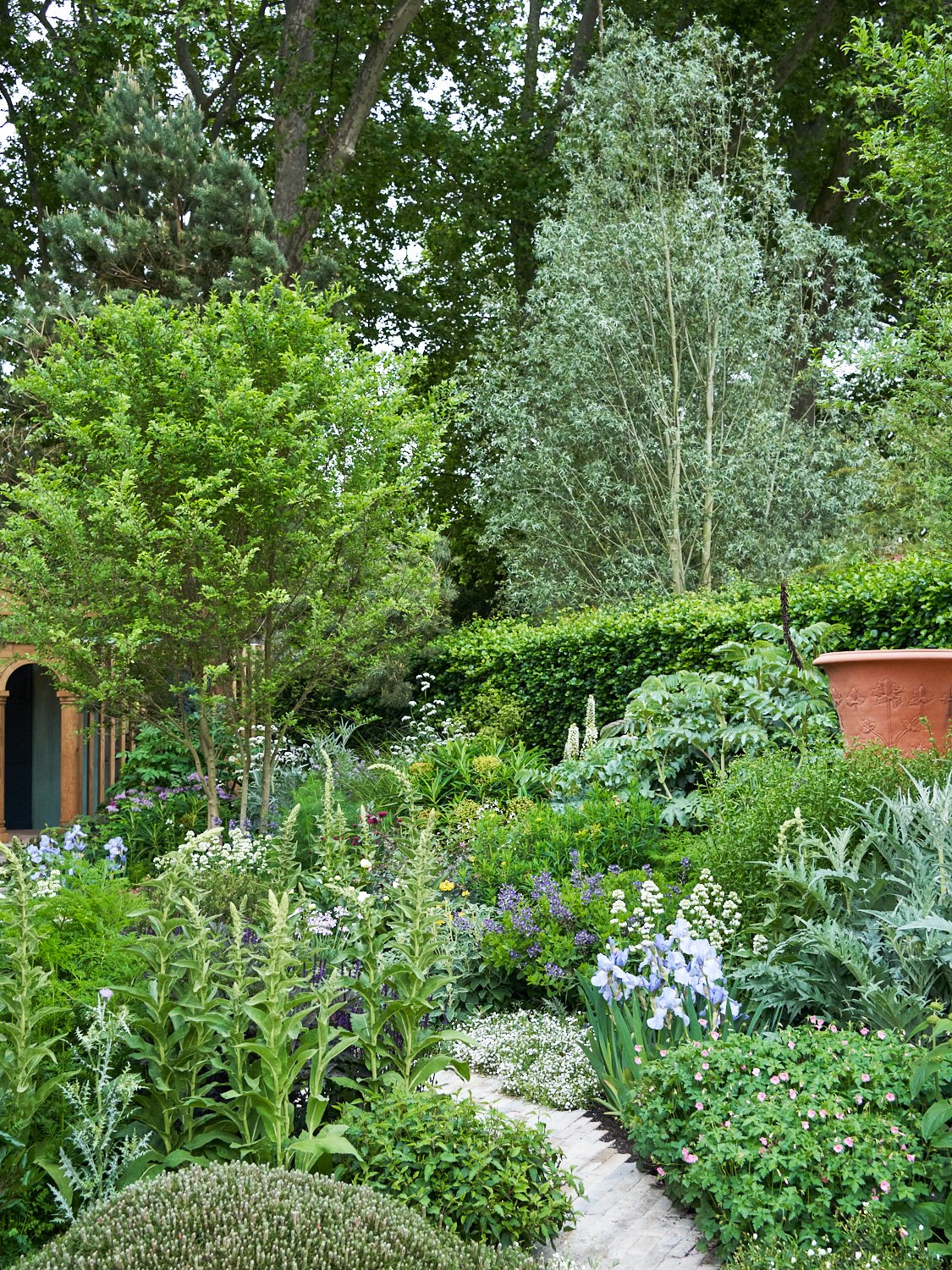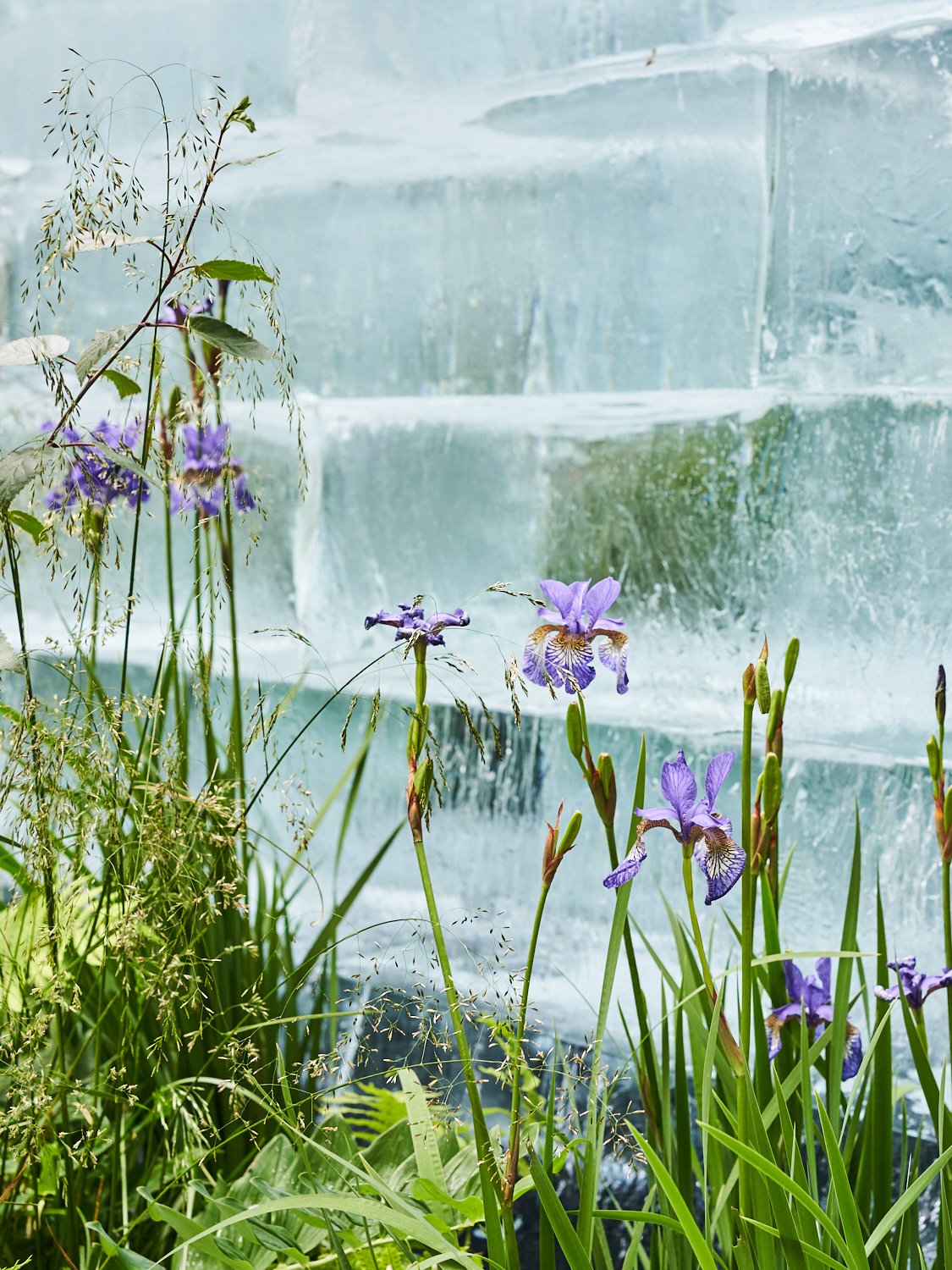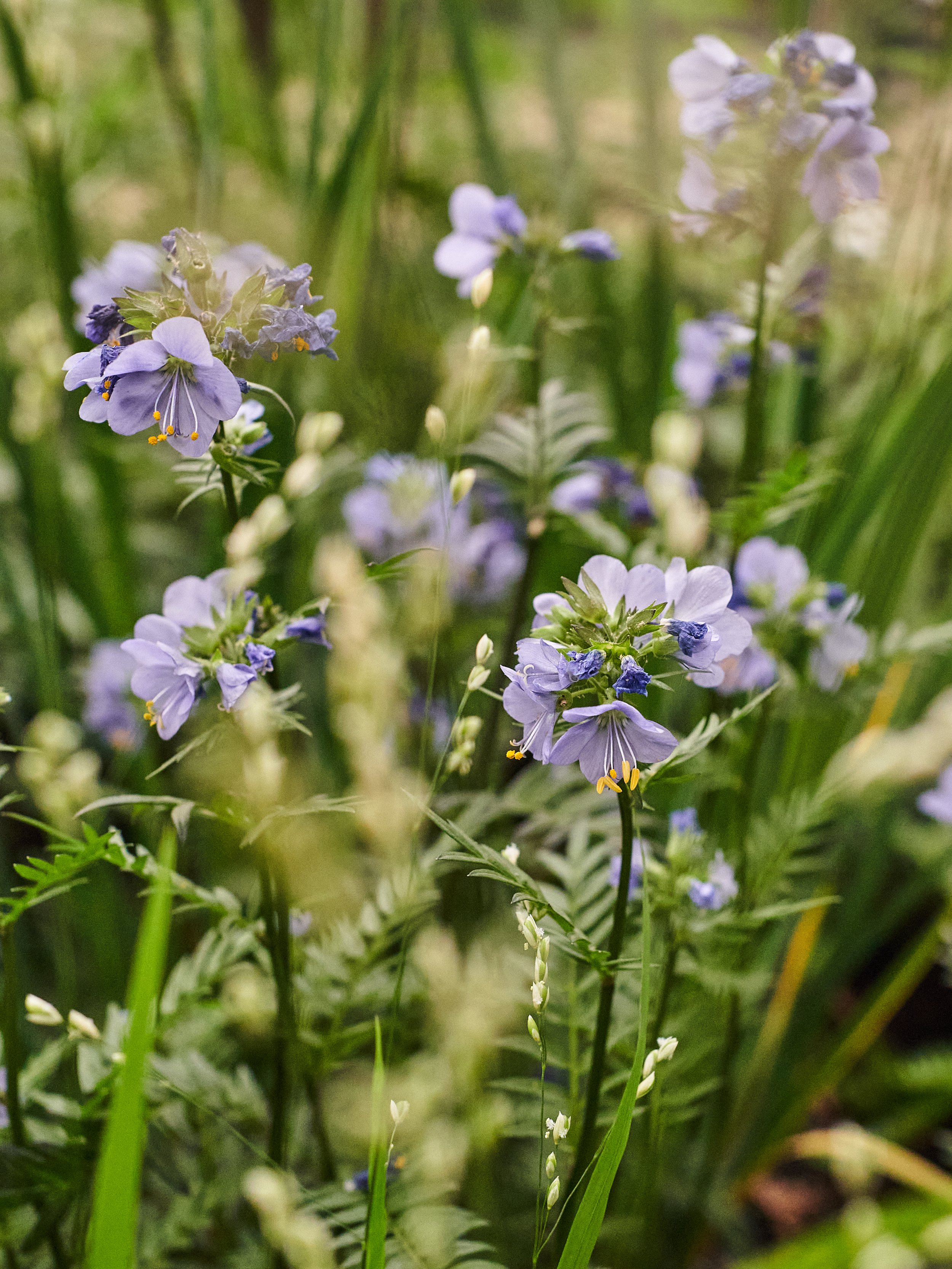When Chelsea Blooms - A slice of Wilderness
And just like that the buzz is back in the horticultural heart of London — dazzling, daring and with a generous (and necessary) hint to the ecological and societal themes that have been prominent for a little longer than one September ago. With just six months between the RHS Chelsea Flower Shows, the diverse issue of mental health and well-being has intensified and stayed on the forefront of designers approaches — intrinsically linked to the environmental challenges this year’s show isn’t just about dazzling with lush and abundant blooms, but offers solutions and future-proof approaches to gardeners and enthusiasts alike.
It’s is an honest approach to keep the strong sense of change that frequently occurs in our (still habitable) biome and voicing it though plant palettes, biophilic structures and an emphasis on sustainability — within all its societal, economical and ecological bandwidth.
From texture-rich schemes that evoked a sense of playfulness (such as Charlie Hawkes, Andy Sturgeons or Paul Hervey-Brookes visions) to formally planted perennials that are to be displayed “in wild manner” yet not taking away the British essence of the well-known perennial borders: curated, clean and traditional as presented by Chris Beardshaw and Richard Miers — this year diversity is underpinning the shows character.
Apart from large-scale biophilic structures and sculptural impressions, the selection of planting stood out in many of the displayed gardens — hinting that the” post-wild” perennial planting may continue with a strong influence of native flora and their often loved foreign cousins that withstand climate conditions.
Dive into a diversity-filled cast of visions, inspirations and well honed craftmanship by designers, plantswomen, artists, builders and landscapers alike:
A Mindful Approach
Through textured walls that gently meander through the wilderness, Andy Sturgeon carefully crafts the relationship of humans to their environment, gently soothing their minds, reenergising their spirit and guiding them though views, paths and a gentle movement that is present within the whole space.
Expressed through a delicate planting palette and precise colour choices he was able to create a rejuvenating space called “The Mind Garden” in support of the leading mental health charity in England and Wales.
By creating different environments within the space from serene and tranquil views to an invigorating textural sea, Andy Sturgeon inspires the visitors to start conversations, to open up and to experience togetherness.
It is this togetherness that is not only reflected in the planting combinations and the various environments that gently grow together — but by intentionally creating biophilic elements that allow an intentional interaction between nature and its inhabitants whilst honouring natures own materiality.
Another layer of “togetherness” is revealed, when looking at the collaborations with Guy Valentine for the hand-crafted textured walls, Johnny Woodford for the sculpted wooden benches and Thea Thompson that has created the bespoke water chutes.
Overspilling Rosa glauca gently merges with Gladiolus communis subsp. byzantinus amidst Stipa gigantea creating movement against the textured clay. A dash of Papaver somniferum ‘Laurens Grape’ considerately contrasted with Euphorbia palustris adds zest to the space and continues to illustrate the mindful approach that Sturgeon has kept throughout his design.
Gladiolus communis subsp. byzantinus merging with Euphorbia palustris
By using different levels in the garden, as well as curved walls and structural trees — different environments have been created: From a “meadow” thriving in full sun, to pockets for plants that thrive in shade or dappled shade such as the Osmunda regalis and Maianthemum oleraceum overspilling onto the stone steps.
Allowing Angelica dahurica to create vertical interest and pulling together the various heights in the space.
Amsonia tabernaemontana ‘Storm Cloud” amongst Gallium odoratum and Dryopteris cycadina
A Sense of Discovery
An unusual approach reinterpret the use of Spirea nipponica “June Bride” has effortlessly been made by Sarah Eberle, pairing it with Euphorbia martinii , right next to an entangling Tellima grandiflora and Trifolium ochroleucon elegantly loosening the cascading water feature that was crafted from Medite plywood, inspired by the fluid shapes of accumulated rock sediments. The illusion of rusted steel is held in place by a sense of discovery fuelled by sound, textures and a sense of timelessness.
Eberle´s eye for proportion has allowed the space to draw in the eyes and meander through the space without being intimidated by the large-scale “rusting” features. With textural delights such as Rodgersia pinnata and Tetrapanax papyrifer against delicate foliages of Epimediums and Hakonechloa macra Sarah was able to display her wealth of plant-knowledge and remarkable eye for detail. Her planting palette reflects the importance of using climate-resistant plants yet also highlighting the need for native flora — allowing the visitor to reflect on their value and aesthetic appearance.
It is a space of curiosity revealing new layers each time the eye wanders onto a different part of the garden —allowing the visitors to be in awe, to be caught by wonder and to experience the joy of discovery that may once have existed in times of the industrial revolution. At the same time it addresses the well-known issues arising from that time, exploring carbon negative and future-proof materials that have long-term sustainability in mind.
To keep the tranquil and immersive allure of the space — Sarah has chosen an array of textural plants, minimising colour to not overwhelm the visitors with emotion. Gentle yellows of Primula bulleyana and Ranunculus acris merge with Melica altissima “Alba” float throughout the space (image above).
A dash of bright orange Trollius lifts the otherwise muted planting (image below).
“This too shall pass”
Continuing this year’s theme of wellbeing, Pollyanna Wilkinson shares her unique perspective about the mental health journey mothers take in pregnancy and early parenthood through a symbolic plant-filled garden. Without concealing the darkness that lies within despair, depression and post-natal experiences Wilkonson is able to transition to a more hopeful outlook though colour and texture of her chosen plant palette simultaneously highlighting the reassurance of better days ahead. The garden brings awareness to the vital work of “Mothers for Mothers” a Bristol-based charity that supports women with their perinatal illnesses and allows them to gain their own strength and vitality again.
With blue hued plants such as Polemonium caeruleum intermingling with Melica altissima “Alba” and Iris sibirica representing the darkness slowly turning towards more uplifting plants and a flush of colour through a combination of Rosa ‘The Lark Ascending”, Cirsium rivulare “Artropurpureum” and Geum “Mai Tai”. Dangling Nectraoscordum siculum gracefully ties the textures together.
Nectraoscordum siculum hovering throughout the planting scheme — picking up the red hues in the space.
The “Dixterian” Influence
Hidden away beneath large trees and a canopy of texture lies a delicate wilderness created by Charlie Hawkes for the Wilderness Foundation UK bringing to life a woodland brimming with layers and layers of well considered plants. Bringing in a “Dixterian” influence through plants like Amicia zygomeris and other tropical nods, like Merillopanax alpinus and Schefflera trevesioides, to his time at Christopher Llyods garden.
His strong sense of layering and the approach of allowing each plant to shine in its own space, relates back to Hawkes time spent at the Tokachi Millennium forest, observing the immaculate eye for detail that is honed in its cultural setting and beautifully curated wilderness. It is a space designed to impact the senses and experiencing nature in an almost spiritual revelation. After the show it will continue to thrive at the Henry Maynard School in Walthamstow allowing the children to learn and grow with the space itself. It shows them the essential connection that humans have to nature and how understanding, nurturing and co-creating with it as a great benefit for the planet.
Polygonatum verticillium among Melica uniflora f. albida
To honour the plants and the spirit of the place, Charlie has curated individual spaces for delicately flowering plants such as Taenidia integerrima (above) or Epimedium x youngianum 'Niveum' contrasted with the heart-leaved Asarum europaeum (below).
A Reclaimed Transformation
Facing the issues of pollution ridden and uninhabitable spaces has challenged Paul Hervey-Brookes to create a transformative space — a reclamation of nature with the intention to create a habitable space on the grounds of an old 1900´s brownfield site. With a seemingly destructive inheritance of impoverished and damaged soil, Hervey-Brookes has chosen to show the potential of reusing found materials, such as recycled aggregates and reclaimed stone, to recreate a new perspective that enables plants and humans to thrive alike.
His planting is based upon a mix of native pioneer species alongside endemic plants which rehabilitate soils and clean the air through higher rate CO2 absorption. Perennials have been chosen on the premise of attracting pollinators and wildlife to further enrich the space with diversity, encouraging a thriving eco-system. Through Cirsium rivulare “Artropurpureum” colour is introduced into the monochromatic palette of the silver foliaged Verbascum bombyciferum paired with fine-leaved Sambucus nigra “Golden Tower”, Thalictrum sp. and the airy pairing of Lychnis fis-cuculi and Anthriscus sylvestris.
Updating Tradition
Beyond the native inspired wilderness that wafted through many gardens honouring natures rawness — Two designers shared their vision of a wild formality. Carefully curated and with a new perspective on the grandeur of the english garden culture that has influenced both of their work, respectively without loosing touch to the earth-honouring practises in creating gardens.
Richard Miers designed a traditional space with a formal layout that was softened by an abundant planting of Allium giganteum “White Giant” , Digitalis purpurea and a the beloved dark coloured Lupinus “Masterpiece”.
Instead of introducing a lawn into the space — Miers choose a variety of Chamomile to update a classic feature and allow it to turn towards contemporary impulses further enhanced through selected sculptures by Tom Stogden and Jack Eagan.
Lychis flos-cuculi “Alba” and Foeniculum vulgaris further lifted the formal layout of the space yet allowed the abundance of an english cottage garden to remain intact (above).
Chris Beardshaw displayed his signature sensibility for english gardening tradition with a nod to contemporary ideas — responding to the quiet confidence and the historical influences that represent the Royal National Lifeboat Institution for which the garden was created. The daily lives at sea inspired the curving of the path that is gently engulfed by a textural sea of planting such as Melianthus major paired with Cynara cardunculus. It is complemented by ocean coloured Iris barbata sp. and Baptisia australis and lifted by white airy flowering perennials such as Valeriana officinalis and Polygonatum biflorum.
A highlight is the beacon inside the wooden arcade that suggests a safe way home back to the shores.
Beyond Chelsea — Beyond Splendour
Future-proof designs and boundary breaking ideas have made its way to London at this years show.
Not only has the theme of mental health and sustainability evolved since its September appearance — but many designers have carefully curated their processes and ideas to create spaces that offer more than a “beautiful glimpse” into what a matured garden may look like. Repurposing, Reusing and Replanting their designs into adaptable gardens that are here for the long-run. Many have been supported by “Project Giving Back” a unique charity set up for the sole purpose of giving charitable organisations in the UK the opportunity to create a garden at the world-famous show and allowing the designers, artisans and landscapers to showcase their visions of boundary-pushing and eco-conscious concepts.
The question of "Chelseas” importance continues to rise in face of climate challenges, current societal issues, war-stricken societies and the openly criticised “splendour” and “void luxury” of a garden-show orientated towards consumerism and theatrically-fuelled displays. Yet in times of our current cultural climate — Design and particularly art has a very important role: It shows hope.
Hope to create better days ahead, to venture into new horticultural realms where wilderness and the ecological cycles are valued for their profound existence. Where else could new ideas be displayed that potentially alter the way that societies look at nature, interact with nature and where else would we see the continuous effort of garden designers, landscapers, plantswomen, constructors, nurseries, sculptors, writers, photographers, creators, collaborators and artists pushing the current world into new futures.
Their importance would otherwise be diminished by daily-routines and determined by a past that does not yet have a solution for days to come. Yes — there is room to bring new concepts and ideas to the front that create even more sustainable ways of displaying these visions and ideas, of living and of shifting the mindset of millions of people.
But Chelsea is a start — for nature can neither be taught, experienced and be interacted with outside of itself.
Images and Words: ©Sebastian Conrad




